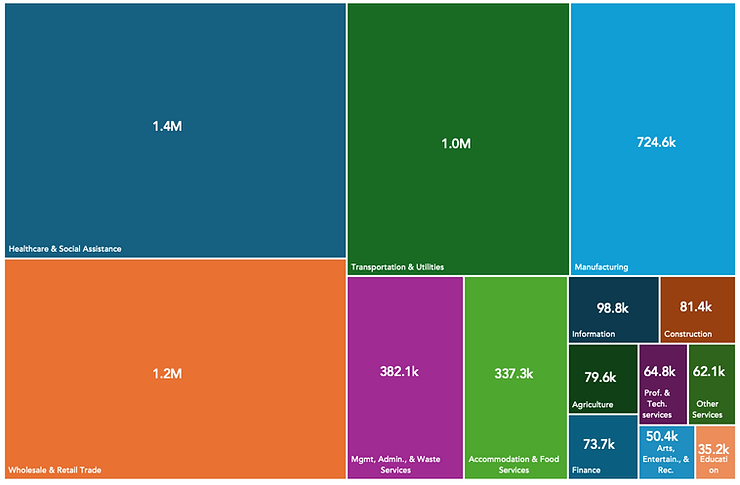Economic development has traditionally been centered around the standard 9-5 workday. Cities and communities have structured their economic activities, public services, and transportation systems to align with this schedule. Retail stores, government offices, and other businesses typically operate within these hours, reflecting the traditional notion that economic activity slows after 5 PM when most workers return home. This model has shaped urban planning, economic policy, and the rhythms of daily life for decades.
Yet many industries, and the workers they employ, operate outside of these daytime hours. For example, in the U.S., 15 million employees are working at 9 PM and more than 6.1 million are on the job at 4 AM. Sectors such as Healthcare, Hospitality, Entertainment, Manufacturing, Transportation, and Retail and Wholesale Trade have a significant proportion of their workforce working evening and late-night hours. At the same time, the rise of remote work has further blurred traditional boundaries, with more people shifting their work hours earlier or later to increase flexibility in their schedules.
Number of Employees Working at 4 AM by Industry in the United States
2023

In regions where these industries dominate, economic development should be reconsidered through the lens of these extended operating hours. For instance, in Nevada, nearly 30% of the state’s workforce is employed in Accommodation and Food Services, Transportation, and Entertainment – three industries with the highest proportion of employees working outside the 9-5 schedule. Similarly, states like Indiana and Michigan have high employment concentrations in Manufacturing, New York and Pennsylvania in Health Care and Social Assistance, and South Dakota and New Hampshire in Retail and Wholesale Trade.
The growth of these industries relies upon the availability of supporting infrastructure and services to provide to the evening and late-night workforce. This includes expanding public transportation systems to run throughout the night and early morning, ensuring the availability of 24-hour businesses such as grocery stores, pharmacies, and restaurants, and providing services like healthcare that can accommodate these schedules.
Moreover, the economic impact of extended operating hours on regional economies is significant, creating additional job opportunities, increasing consumer spending during off-peak hours, and driving investment in sectors that support the nighttime economy. As cities and communities grow more accommodating to these work hours, they not only become more livable for residents with diverse schedules but also more attractive to businesses looking to capitalize on a workforce that is active round-the-clock, ultimately fostering greater economic development and growth.


